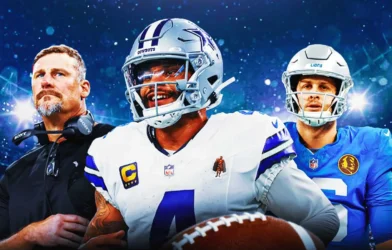In Central America, few matchups generate as much excitement and national pride as a meeting between Guatemala and Panama. Whether it’s on the football pitch, in cultural exchange, or through economic collaboration, the comparison between these two nations sparks a fascinating discussion. While they share many similarities as Latin American neighbors, their unique histories, social dynamics, and aspirations set them apart in compelling ways.
A Shared Region, Different Paths
Both countries are located in the heart of Central America and are part of the same cultural and linguistic landscape. Spanish is the dominant language, Catholicism has played a strong historical role, and family values are deeply rooted in both societies. However, their historical paths have shaped two distinctly different national identities.
Guatemala, with its ancient Mayan roots and highland cultures, carries a rich indigenous heritage that still plays a major role in daily life. From traditional textiles to languages and community life, its indigenous population remains active and visible. Panama, on the other hand, has developed a more Caribbean-influenced, globally connected identity, largely due to the presence of the Panama Canal and its strategic location as a trade hub.
Economic Outlook
When comparing the economies of Guatemala and Panama, clear differences emerge. Panama has experienced steady economic growth over the past two decades, largely due to its banking sector, logistics industry, and control of the Panama Canal. The capital, Panama City, is a vibrant financial center with a skyline often compared to that of Miami.
Guatemala’s economy is more agrarian in nature, relying heavily on exports such as coffee, bananas, and textiles. While it has a larger population, its GDP per capita is lower, and poverty remains a significant challenge. However, the country has shown resilience through local entrepreneurship and a growing digital sector in urban areas.
Football Rivalry and National Passion
In the sporting world, football has long been a point of pride for both nations. Matches between Guatemala and Panama often bring out passionate fan bases and tense rivalries. While neither country has the consistent global presence of Brazil or Argentina, regional competitions like the CONCACAF Gold Cup and World Cup qualifiers give these teams a platform to shine.
Panama made headlines globally when it qualified for the 2018 FIFA World Cup in Russia for the first time in its history. It was a moment of national celebration and marked a milestone for Central American football. Guatemala, although rich in football talent, has yet to qualify for a World Cup, often falling short in qualification stages. However, domestic enthusiasm for the sport remains high, and the national team continues to build toward future success.
Cultural Expression and Identity
In terms of cultural expression, both nations offer deep traditions and vibrant creativity. Guatemalan culture is steeped in pre-Columbian art, colorful markets, and time-honored festivals. Cities like Antigua and Quetzaltenango are living museums of colonial and indigenous fusion. Handwoven textiles, Mayan cuisine, and spiritual traditions are all part of its national charm.
Panama, meanwhile, embraces a multicultural identity. With influences from African, European, Asian, and indigenous communities, its music, dance, and cuisine are reflections of this rich blend. The annual carnival in Panama is one of the biggest in the region, drawing visitors from around the world. The country’s indigenous Guna people, Afro-Caribbean rhythms, and growing art scene make it a place where traditional and modern cultures coexist.
Social Challenges and Opportunities
Both countries face social challenges, particularly around inequality and access to quality education and healthcare. Guatemala has struggled with political instability and corruption, which has slowed down development in many sectors. Rural communities, especially indigenous ones, often lack access to basic services, though NGOs and international partners continue to support development programs.
Panama, while economically more developed, also grapples with inequality. The wealth gap between urban and rural areas remains wide, and some indigenous groups still face marginalization. However, investment in infrastructure, education, and technology has helped expand opportunities in recent years.
Environmental Beauty and Tourism
Both nations boast stunning natural landscapes that make them appealing destinations for tourists and nature lovers. Guatemala offers volcanoes, lakes, and lush rainforests, with Lake Atitlán and Tikal being among the top attractions. The blend of natural and archaeological wonders draws both backpackers and cultural tourists.
Panama, with its tropical climate and coastal diversity, offers a different kind of adventure. From the urban skyline of Panama City to the islands of Bocas del Toro and San Blas, the country caters to both luxury travelers and eco-tourists. The Panama Canal is a marvel of human engineering and remains the country’s most iconic site.
Diplomatic and Regional Relations
On the diplomatic front, Guatemala and Panama have maintained friendly relations and collaborate on issues like trade, migration, and regional security. Both are part of larger regional bodies such as SICA (Central American Integration System), and they share concerns about climate change, organized crime, and economic cooperation.
Their roles in international forums are also growing, with Panama often playing a bridge between North and South America due to its geographic position, while Guatemala’s leadership on indigenous rights has been noted in global conversations.
Conclusion
Guatemala vs Panama is not just a comparison—it is a celebration of diversity within Central America. While each country has its strengths, challenges, and unique paths, both contribute to the rich cultural and political tapestry of the region. Whether through football matches, cultural pride, or national growth, their stories continue to inspire and engage.
This is not a rivalry built on conflict, but on shared passion and mutual aspiration. In exploring their differences and similarities, we gain a deeper understanding of what makes each nation special—and how together, they shape the soul of a region in motion.













Comments are closed